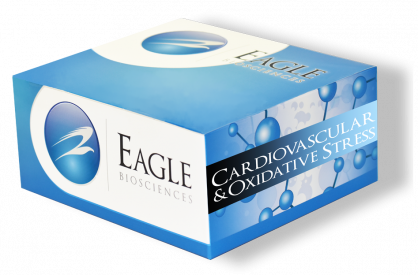15-Epi-Lipoxin A4 ELISA Assay
The 15-Epi-Lipoxin A4 ELISA Assay is For Research Use Only
Size: 1×96 wells
Sensitivity: 0.02 ng/ml
Dynamic Range: 0.02 – 20 ng/ml
Incubation Time: 2 hour
Sample Type: Biological Fluids
Sample Size: 1 mL
Product manufactured in the USA
Assay Principle
The 15-Epi-Lipoxin A4 ELISA Assay Kit (Enzyme-Linked Immunosorbent Assay) for the quantitative analysis of 15-epi-Lipoxin A4 levels in biological fluid. This test kit operates on the basis of competition between the enzyme conjugate and the 15-epi-LXA4 in the sample for a limited number of antibody binding sites. The sample or standard solution is first added to the microplate. Next, the diluted enzyme conjugate is added and the mixture is shaken and incubated at room temperature for one hour. During the incubation, competition for binding sites is taking place. The plate is then washed removing all the unbound material. The bound enzyme conjugate is detected by the addition of substrate that generates an optimal color after 30 minutes. Quantitative test results may be obtained by measuring and comparing the absorbance reading of the wells of the samples against the standards with a microplate reader at 650 nm. The extent of color development is inversely proportional to the amount of 15-epi-LXA4 in the sample or standard. For example, the absence of 15-epi-LXA4 in the sample will result in a bright blue color, whereas the presence of 15-epi-LXA4 will result in decreased or no color development.
Related Products
Lipoxin A4 ELISA Assay
15-Isoprostane F2t ELISA Assay Kit
TBARS ELISA Assay Kit


